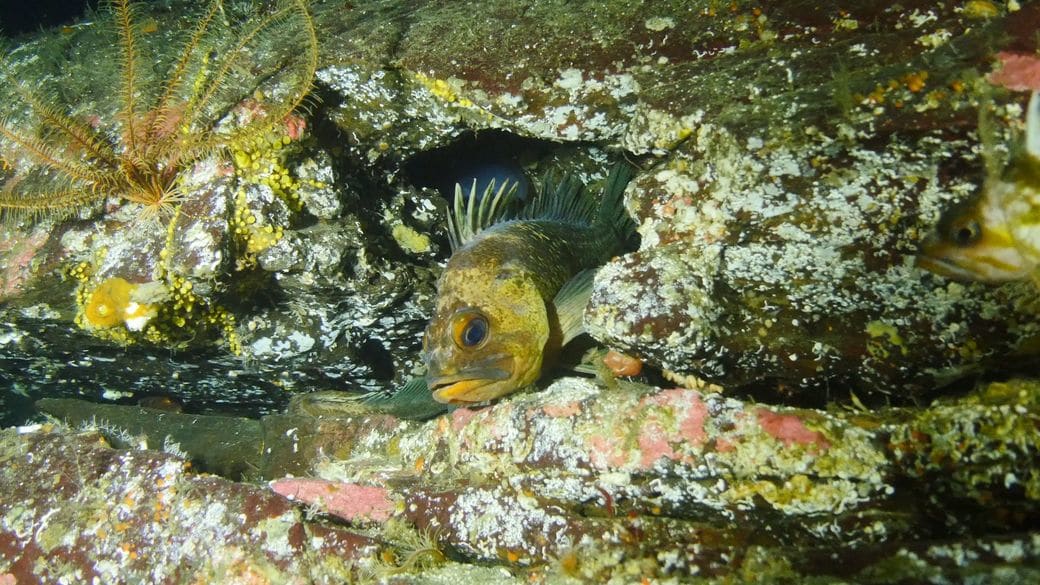In the scientific community, we know a lot about the different sounds in the ocean. Yet, there is still so much that we don’t know. It is not unusual to record sounds that we can’t identify. Sounds that haven’t yet been documented in the scientific literature. This is what happened off British Columbia. Recordings JASCO collected over the last 5 years at various places along Canada’s west coast were full of grunting and knocking sounds at low frequencies. Not from humpback whales, nor from seals. Intrigued, we sent sound clips to fellow researchers around the world for help. Their responses were unanimous—the source of the sounds was fish.
While most of us are familiar with the sounds of whales, dolphins, and other marine mammals, there is much less knowledge and awareness of sounds made by fish, including in the scientific community. The fact that we had recorded fish all over the BC coast, opened the door to exciting ideas and questions! Do different species of fish make different sounds? Can we use passive acoustics to monitor the presence and movements of fish in BC waters, as we do for whales? What is the impact of man-made noise on fish sound production?
Using underwater sound recordings to tell if fish are present at a given time and location is interesting, but not that useful if we can’t tell which fish species we are listening to. Unfortunately, this is a big knowledge gap. We just don’t know very much about the acoustic repertoire of the world’s fish species. Seeing an opportunity to help fill in these knowledge gaps, JASCO scientist Xavier Mouy began his PhD at the University of Victoria focusing on fish sounds. He teamed up with experts in ecology, fish biology, and acoustics and started the Fish Sound Project. The objective: to catalog fish sounds across British Columbia’s coast.
Recording the sounds of captured fish in tanks might seem like the logical way to proceed. Unfortunately, it’s not that simple. Fish typically don’t behave the same in tanks as they do in their natural environment and consequently may not produce the same sounds. Another issue is the complex propagation of sound in small tanks. The sound bounces back and forth off the walls of the tank and the resulting interference make it difficult to record an accurate acoustic signature of the fish sounds.
To avoid these issues, the expedition was planned to record fish in their own environment. Xavier and his team will use an AMAR G3 connected to an array of 6 hydrophones, and a video camera mounted to the top of the array. With the hydrophone array, they can localize the source of the fish sounds in three dimensions, which they can then compare to the video recordings to identify the species that produced the sound. They will deploy the system along the coast of British Columbia from Victoria to Prince Rupert and progressively build up a catalog of fish sounds.
Listen to Xavier’s interview on CBC Radio’s Quirks and Quarks from August 2017.
Headphones recommended.
Xavier Mouy is a PhD student in acoustics in the School of Earth and Ocean Sciences at the University of Victoria, Canada, and a project scientist at JASCO. He is leading the fish sound expedition as part of his thesis, supervised by Dr Francis Juanes and Dr Stan Dosso. Xavier has over 10 years of experience in the industry developing tools for automatically detecting, classifying, and localizing marine mammal sounds. He is keen to help make passive acoustics a viable tool for monitoring fish on the BC coast.





